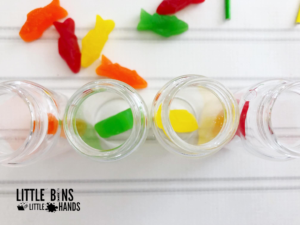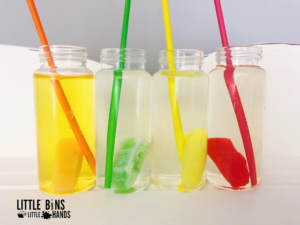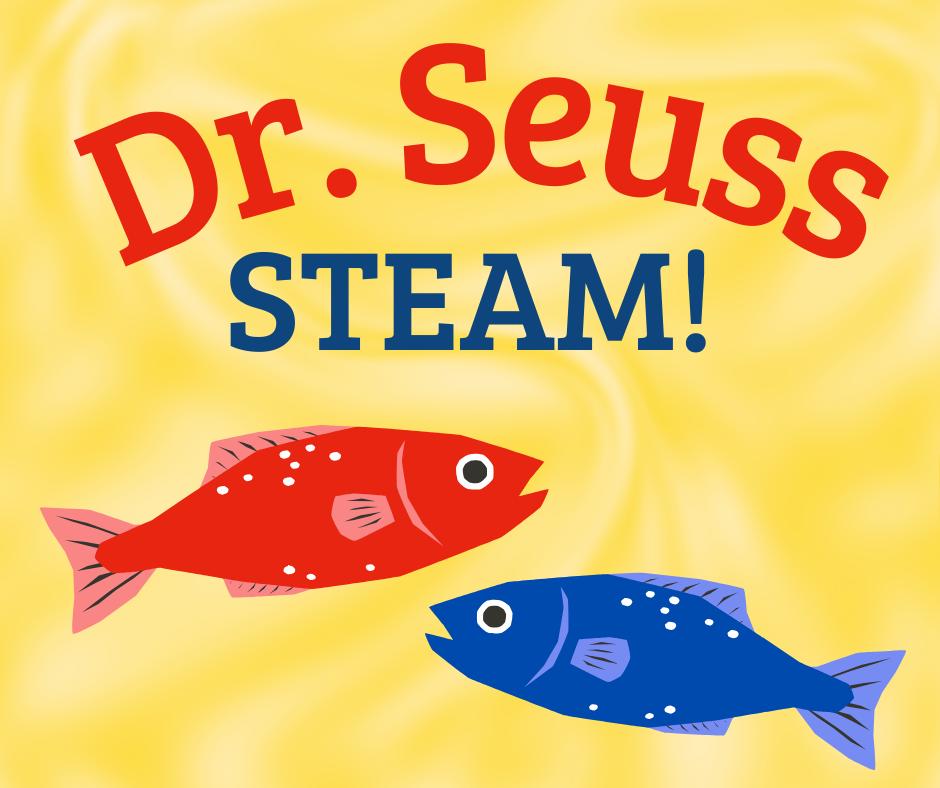This week was Read Across America Week! Read Across America begins each year on the birthday of beloved children’s book author, Dr. Seuss. In honor of this wonderful week celebrating the love of reading, we’ve got a fun Dr. Seuss-themed STEAM activity for you on this STEAM Saturday!
This week’s project from Little Bins for Little Hands is inspired by the book One Fish, Two Fish, Red Fish, Blue Fish… You child will have a splash exploring science with this Dissolving Candy Fish experiment!
Before doing this simple and fun science activity, take some time to read this classic book. We’ve included a read along below!
 Now that we’re in a Suessian mood, let’s take our fish and dive into our Dissolving Candy Fish experiment. Here’s what you’ll need for your project to go swimingly:
Now that we’re in a Suessian mood, let’s take our fish and dive into our Dissolving Candy Fish experiment. Here’s what you’ll need for your project to go swimingly:
- Gummy Candy Fish
- Small glass or plastic jars
- Warm water
- Rubbing alcohol
- Vinegar
- Cooking oil
- You can also use seltzer, milk, juice, or other liquids you have around your house (just make sure you have 4 different liquids to compare)
- Stir sticks
 First, place one candy fish in each jar. Make each fish a different color to help you keep track of which jar is which. Next, pour each different liquid into a separate jar, making sure each jar contains the same amount of liquid. Make a note of which jar each liquid is in.
First, place one candy fish in each jar. Make each fish a different color to help you keep track of which jar is which. Next, pour each different liquid into a separate jar, making sure each jar contains the same amount of liquid. Make a note of which jar each liquid is in.
Now, we wait! Observe the jars over the course of 12 or more hours. Take notes… What is happening in each jar? Is the fish getting larger or smaller? Is the liquid changing color? Are there bubbles? What other changes are happening?
So what is happening during this experiment? You are watching something called “osmosis.” Osmosis is the process of water moving through a barrier from an area with a high water concentration to an area with a low water concentration. Your candy fish are made of gelatin, sugar, and flavoring – no water. In this case, the barrier that the water is moving through is the gelatin.
As always, be as creative as you want, and above all, have lots of fun learning together!
We’ll see you right back here next Saturday for another STEAM Saturday activity! Scroll through the rest of our website to learn how Critchlow Adkins is Building Brighter Futures for the children and families we serve!








